Art World
An ‘Unbelievable’ Coincidence? Damien Hirst’s Venice Show Looks Almost Exactly Like the Grenada Pavilion
The YBA artist's underwater show bears an uncanny resemblance to Jason deCaires Taylor's work.
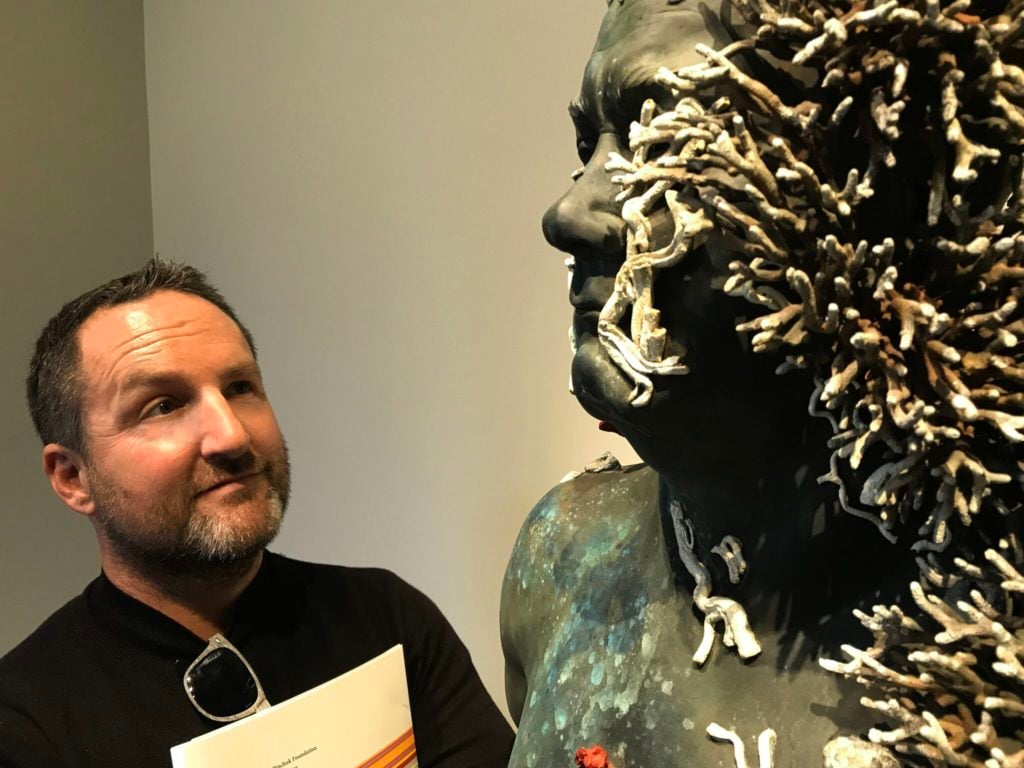
The YBA artist's underwater show bears an uncanny resemblance to Jason deCaires Taylor's work.

Ben Davis

Love it or hate it, Damien Hirst’s vast “Treasures From the Wreck of The Unbelievable” show was one of the major attractions around the 2017 Venice Biennale, stuffed to the gills with barnacle-covered statues and (staged) documentation depicting their rescue from the ocean floor.
You can probably count the island nation of Grenada in the “hate it” camp.
Just a few minutes away from one of Hirst’s two venues, the Punta Della Dogana, you’ll find the Grenada Pavilion‘s group presentation, “The Bridge.” Wandering into that show, you really do feel you’ve entered an unauthorized annex of Hirst’s “Unbelievable” show for a second.
There are statues caked in sea life. There are moody underwater images. These, however, are not works by Damien Hirst but by the artist Jason deCaires Taylor (b. 1974).
The coincidence is even more unbelievable than the crazy tale Hirst is weaving around his show!

The official poster for the Grenada Pavilion in Venice.
Hirst has, of course, been working on his “Unbelievable” show for some 10 years. DeCaires Taylor, for his part, founded the world’s first underwater sculpture park off the west coast of Grenada back in 2006. His biography describes him as “the first of a new generation of artists to shift the concepts of the Land Art movement into the realm of the marine environment,” and he’s installed underwater sculptures and spoken about his undersea art to crowds all over the world.
A definite difference between the two installations: Hirst’s work is all about the fantastical, while deCaires Taylor is out to say something about the environment. The two central sculptures of his small show, Bleached I (2017) and Bleached II (2017) are accompanied by information about the epidemic of “coral bleaching” caused by global warming, a phenomenon that is rapidly exterminating the world’s reefs.
Apparently, I wasn’t the only one who picked up on the similarity. Saying that the Pavilion had been “inundated with questions about Hirst’s alleged appropriation of his work,” DeCaires Taylor today issued a (fairly classy) statement:
Over the past 11 years working underwater I have always hoped my work was about giving something back, creating new life and providing glimpses into a fragile imperiled world. After viewing Hirst’s latest exhibition it seems I have certainly created an art genre that has been responded to, but his marine facsimiles are very different in context from my living installations.
If people really want to see “unbelievable treasures” they should look below the surface of our seas at the real live wonders of the blue world–nature does not lie.
The artist does seem to be taking it all in stride—though he also added in an email to me, “At this moment I am still considering my options and discussing it with my legal team.”
A spokesperson for Damien Hirst wrote:
Damien has always been fascinated by what he describes as “the action of the world on things” and he became interested in coralised works in the late 90s, when he sunk some objects off the coast of Mexico. The whole concept of Treasures is a fantastical story about a collection of objects, influenced by a wide range of cultures and stories from across the globe and throughout history, which are discovered at the bottom of the sea.
I’ll let the readers judge what this deep-sea coincidence means.
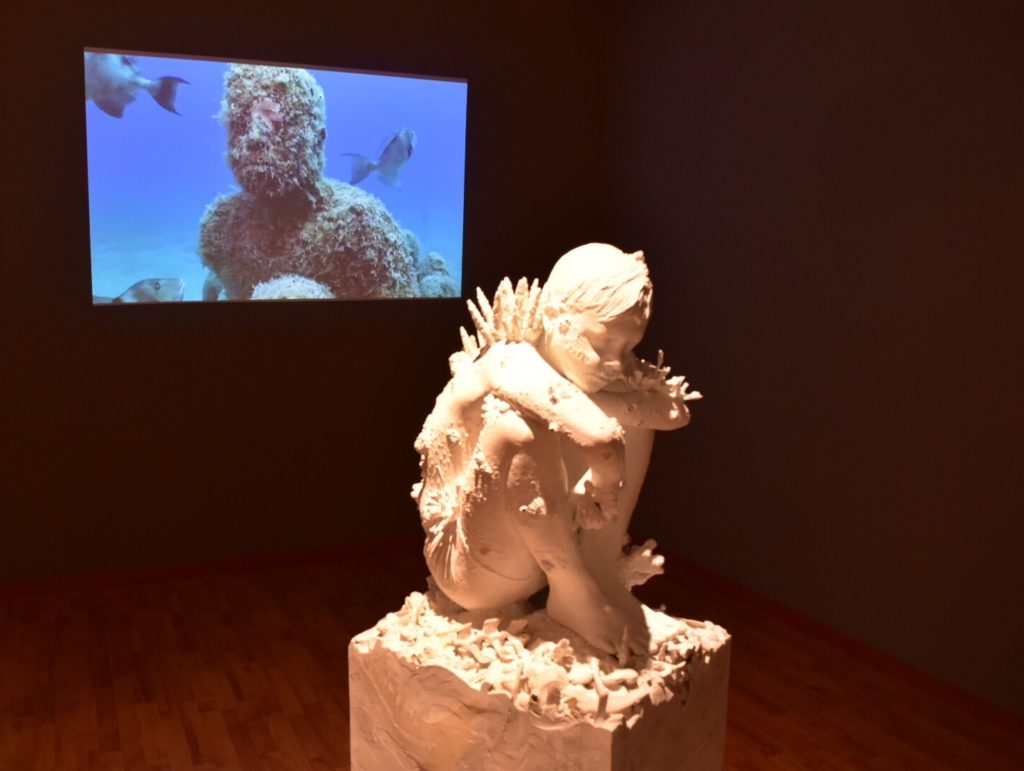
Jason de Caires Taylor sculpture Bleached I in the Grenada Pavilion. Image. Ben Davis.
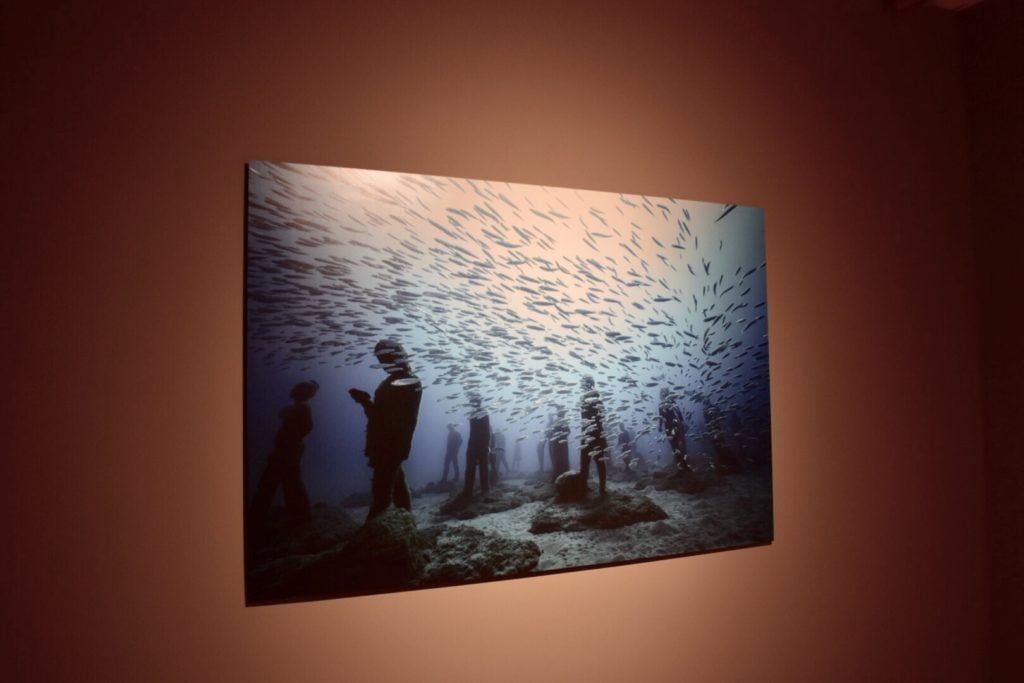
Photo documentary from Jason deCaires Taylor’s Grenada Pavilion. Image: Ben Davis.
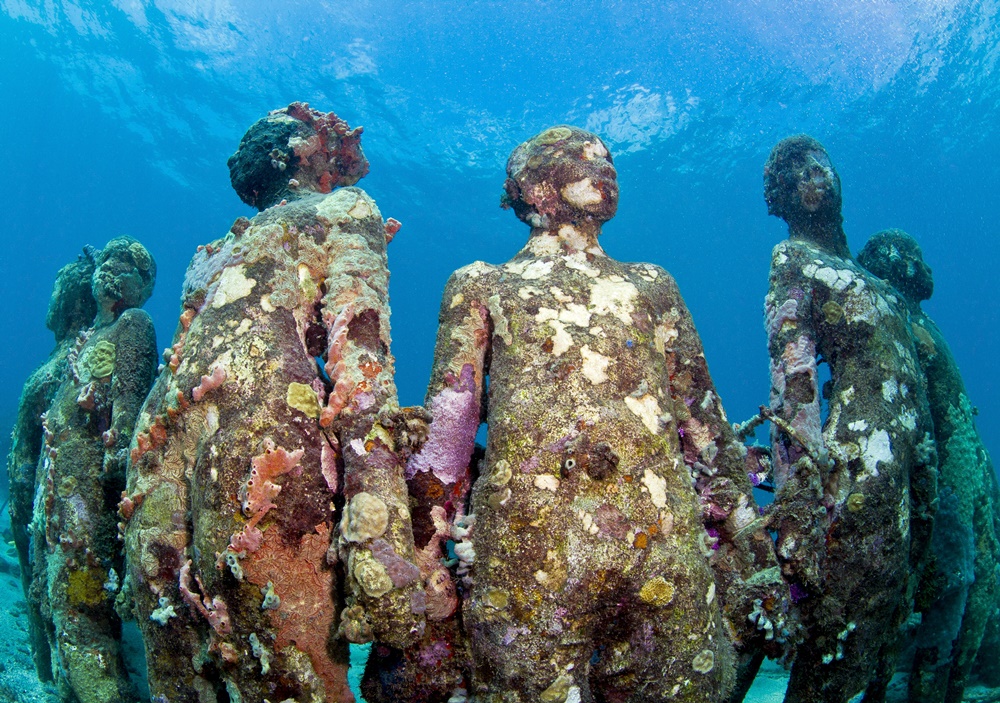
Jason deCaires Taylor, Vicissitudes. Image courtesy Jason deCaires Taylor.
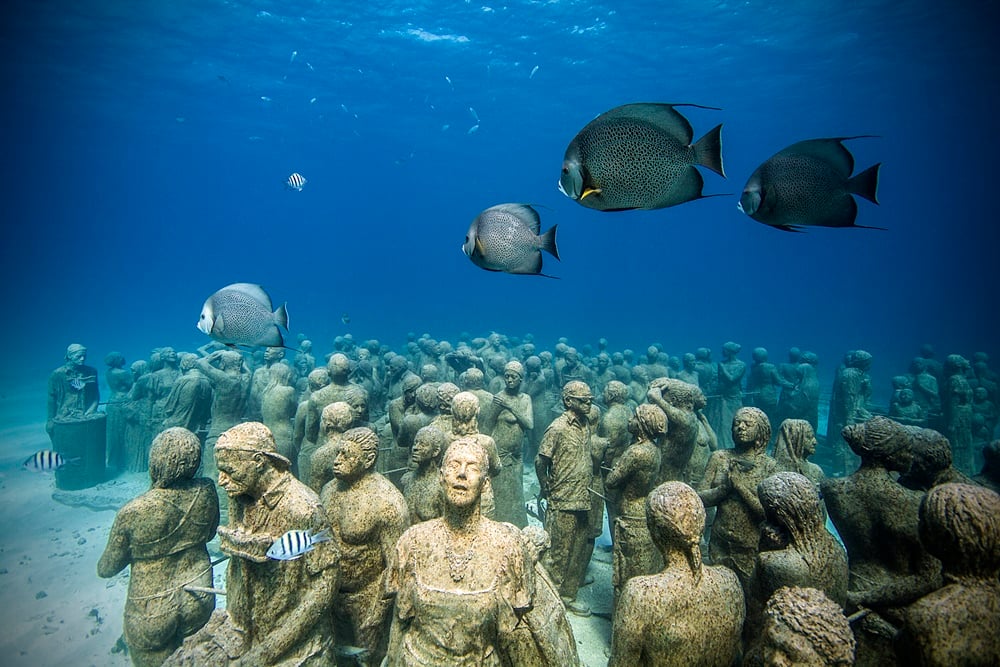
Jason deCaires Taylor’s Silent Evolution. Image courtesy Jason deCaires Taylor.
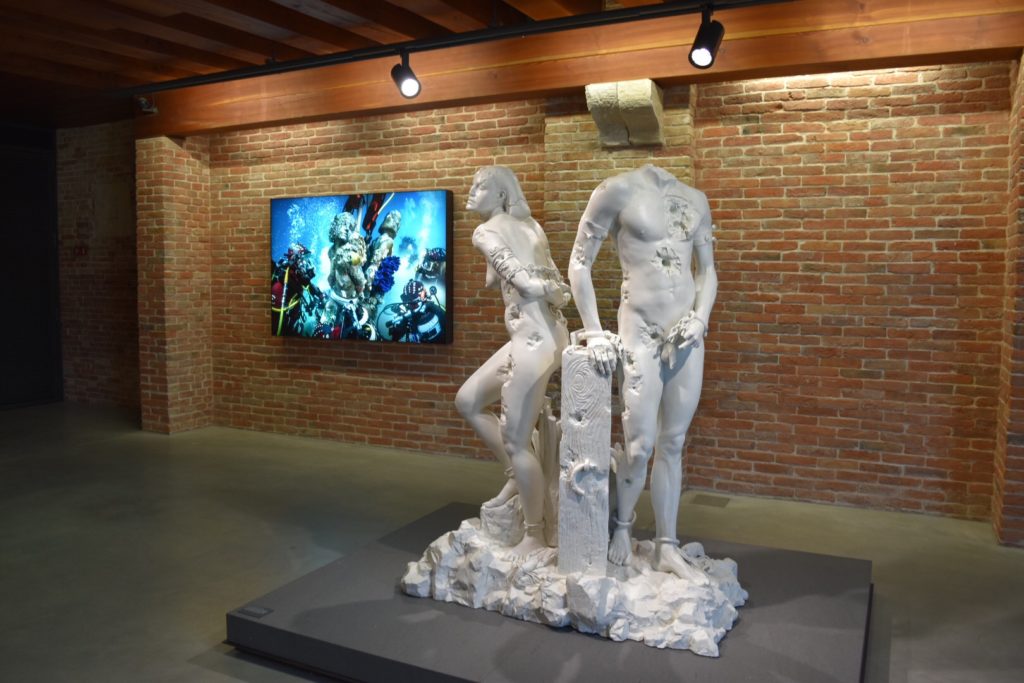
Damien Hirst, Pair of Slaves Bound for Execution (2017), with documentation. Image: Ben Davis.
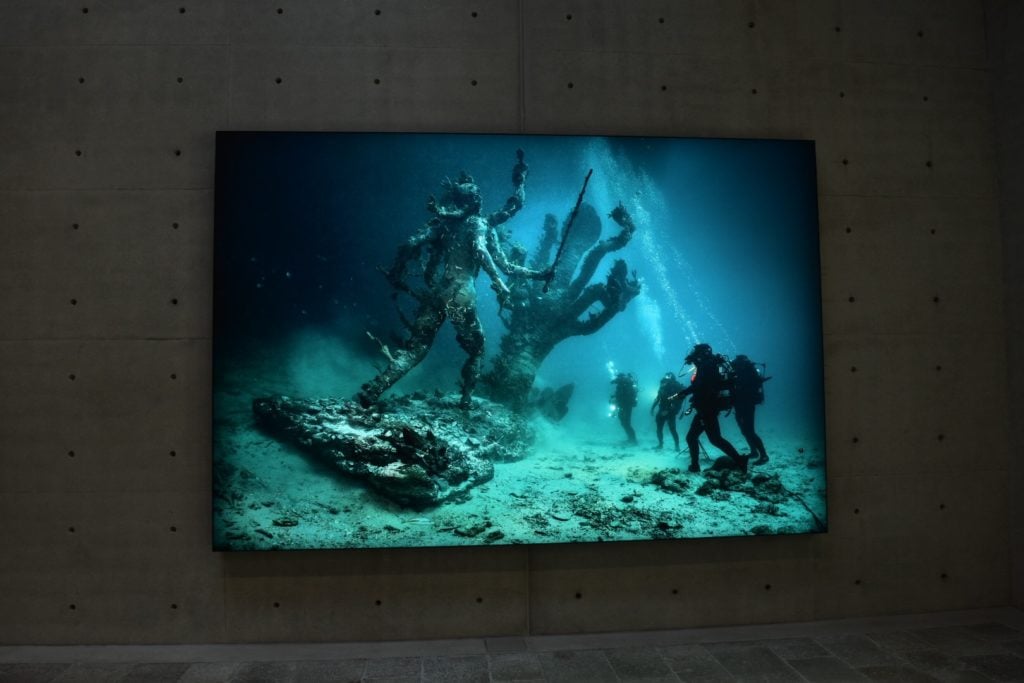
Lightbox photo from Damien Hirst’s “Treasures From the Wreck of the Unbelievable.” Image: Ben Davis.
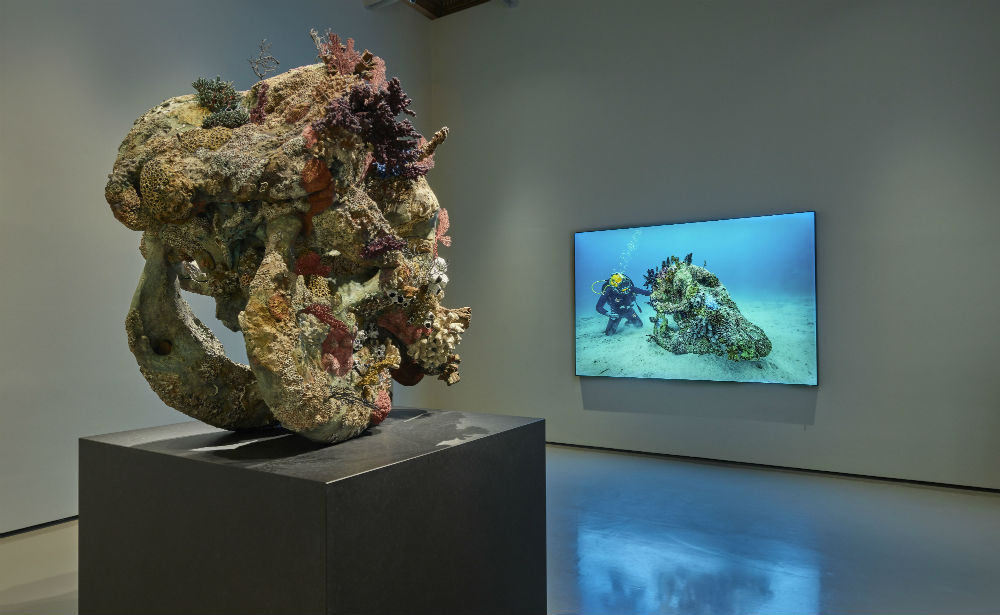
Damien Hirst, Skull of a Cyclops, Skull of a Cyclops Examined by a Diver (photography
Christoph Gerigk). Photographed by Prudence Cuming Associates © Damien Hirst and Science Ltd.
All rights reserved, DACS/SIAE 2017
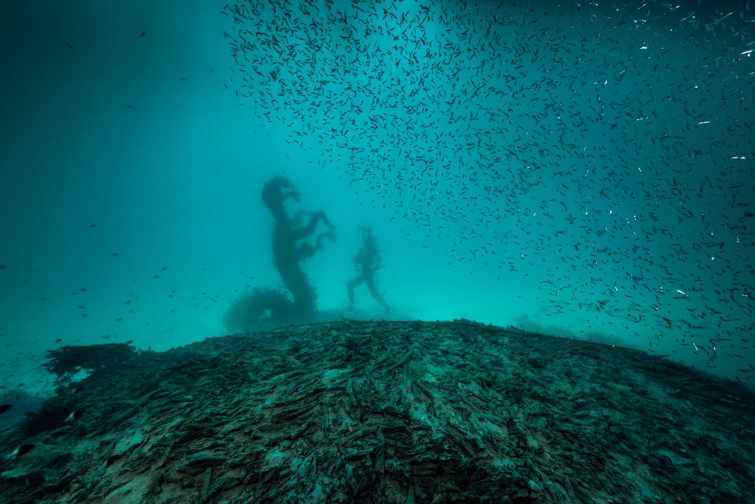
Image from Damien Hirst’s “Treasures from the Wreck of the Unbelievable.” Photo Christoph Gerigk, ©Damien Hirst and Science Ltd.
Note: This story was updated on May 17 to include a comment from Damien Hirst.